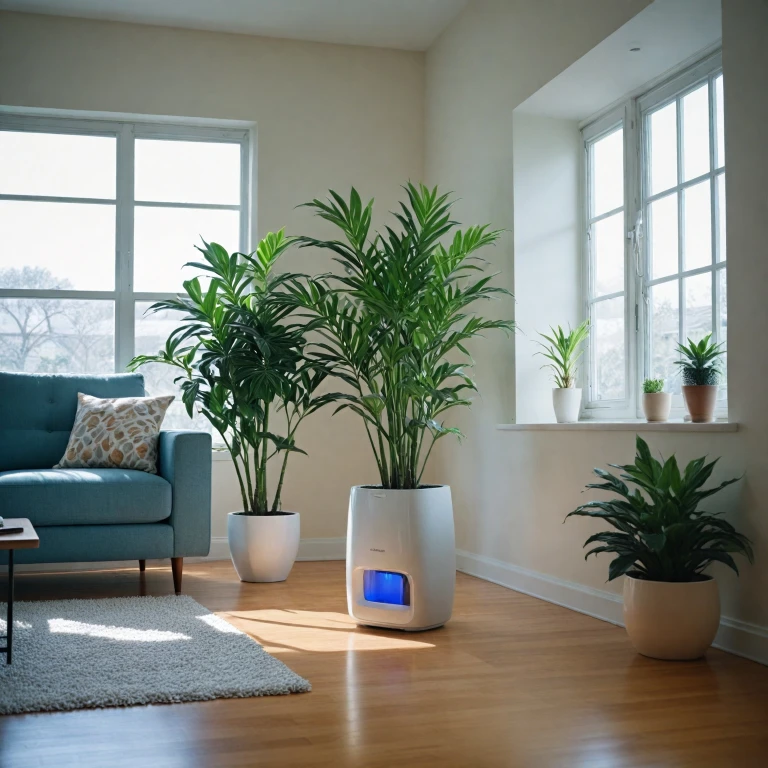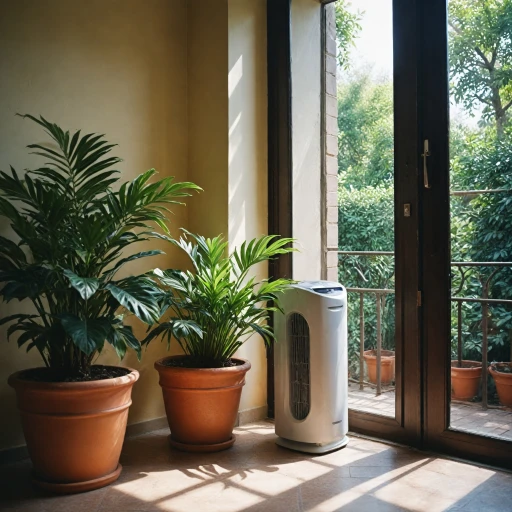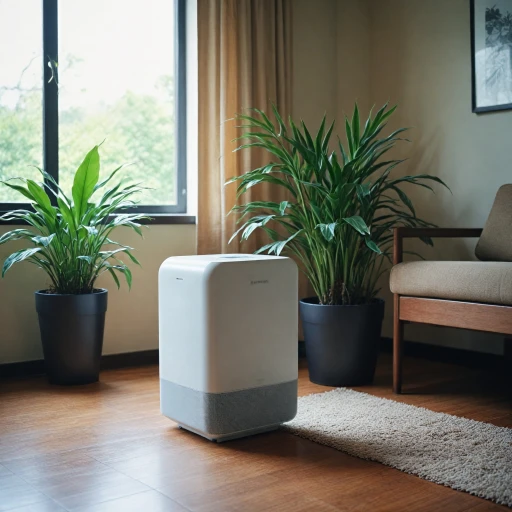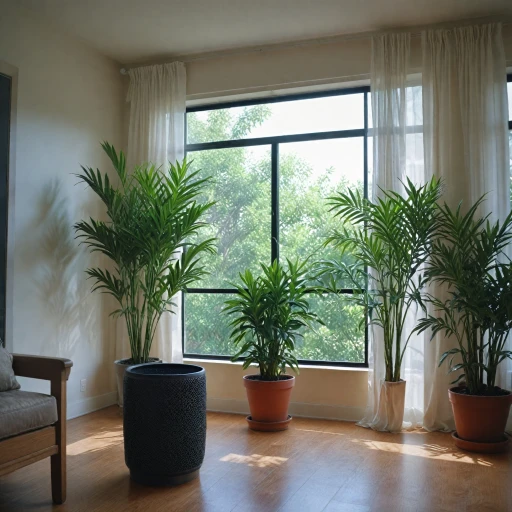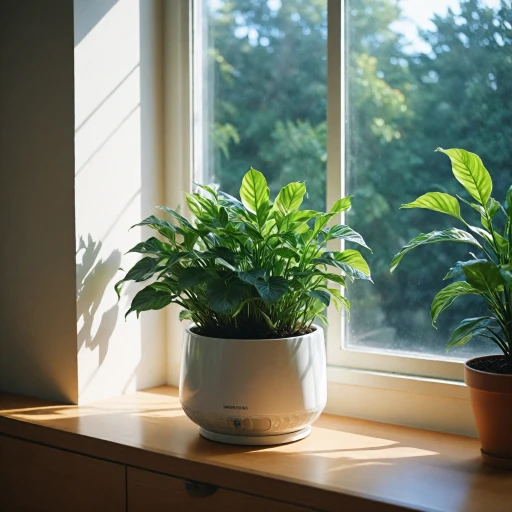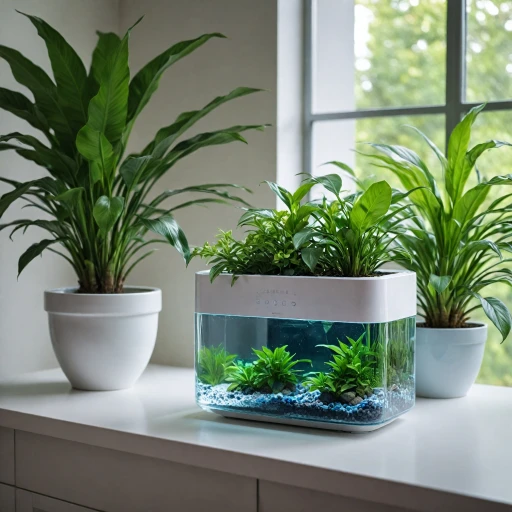
How Plasma Air Purifiers Work
Mechanism of Plasma Air Purifiers
Plasma air purifiers employ an advanced purification system designed to enhance indoor air quality by reducing harmful pollutants. The key element in these products is the plasma technology, which generates a cloud of positive and negative ions. These ions interact with airborne particles, including dust, allergens, and other pollutants commonly found in both residential and commercial settings. The purification process kicks off with ionization, where a high-voltage electrode in the unit creates a vast array of charged ions. When these ions come into contact with airborne contaminants, they bond with them, causing particulate matter to cluster together. This agglomeration makes it easier for the purification system to capture them through subsequent filtration stages, improving indoor air quality. The technology's effectiveness lies in its dual-ion generation, which not only targets visible pollutants but also tackles microscopic particles. These negative ions and their counterparts work synergistically to neutralize bacteria, viruses, and other harmful substances, making plasma air purifiers a sought-after technology in air handling systems, from office buildings to commercial applications. While highly efficient, it is essential to be aware of potential ozone emissions. Some plasma air purifiers might produce traces of ozone, but many modern units are designed to maintain validated ozone levels, ensuring that the product does not compromise safety. When selecting a unit, opting for a model that adheres to strict standards and privacy policy regulations is crucial for ensuring both air quality and user safety. For those interested in the detailed operation and benefits of different air purifier technologies, it may be useful to explore comparisons with electrostatic air purifiers, which offer a unique method of removing pollutants from indoor air.Benefits of Using Plasma Air Purifiers
Advantages of Plasma Air Purifiers
Plasma air purifiers are gaining popularity due to their innovative approach to air purification. Their primary function is to improve indoor air quality by using advanced plasma technology. Here's what makes them stand out:- Effective Air Purification: Plasma air purifiers utilize bipolar ionization, which emits both positive and negative ions. This process efficiently neutralizes harmful pollutants and airborne particles, significantly enhancing the overall air quality in various environments.
- Commercial and Residential Applications: These purifiers are versatile, fitting well in both home settings and commercial applications, such as office buildings and industrial spaces. Their ability to improve air quality makes them a valuable addition to any air handling system.
- Reduction of Harmful Pollutants: Plasma technology has been shown to minimize harmful pollutants, including allergens, bacteria, and viruses. This is particularly important for improving indoor air conditions and creating a healthier living space.
- Low Ozone Emissions: Unlike some air purification systems, plasma air purifiers are designed to produce as minimal ozone emissions as possible. This ensures that the benefits of clean air do not come at the cost of introducing new pollutants.
- Minimal Maintenance Required: One of the key advantages is the reduced need for frequent maintenance. Other products, like those using traditional HEPA filters, may require regular filter replacements, whereas plasma units often demand less upkeep.
Comparing Plasma Air Purifiers with Other Technologies
Comparative Overview of Air Purification Technologies
When it comes to improving indoor air quality, multiple air purification technologies are available, each with unique features and capabilities. Understanding these differences is crucial for making an informed decision about which product best meets your needs.
Plasma air purifiers use advanced ionization technology, which involves releasing positive and negative ions into the air. These ions attach to airborne particles, making them easier to capture and remove. The result is a reduction in harmful pollutants and an improvement in air quality without emitting harmful ozone.
In comparison, HEPA filters trap particles mechanically as air passes through the filter. While highly effective at capturing very small particles, HEPA filters do not neutralize airborne pathogens or odors. This limitation can be significant in certain indoor air applications, such as office buildings and commercial spaces, where odor and pathogen control are crucial.
Another technology to consider is UV air purification, which uses ultraviolet light to neutralize bacteria and viruses. While effective for certain applications, UV purifiers often require integration into existing air handling systems and can produce ozone emissions if not designed correctly.
For those concerned about ozone emissions, validated ozone-free products are available, ensuring a safe and effective purification process without releasing harmful byproducts.
Products that incorporate bipolar ionization, like plasma air purifiers, can offer a balanced approach to purification by combining the benefits of ionization and reduced ozone output. This makes them particularly suitable for diverse applications, from residential to commercial settings, including schools and healthcare facilities.
Ultimately, the right choice depends on specific needs and preferences. Consider the type of pollutants present, the space's purpose, and any additional purification needs, such as odor control, to choose the best system for your environment. These factors will guide you toward the most effective methods for maintaining a high standard of indoor air quality.
Choosing the Right Plasma Air Purifier for Your Needs
Guidance for Selecting an Optimal Plasma Air Device
Choosing the right plasma air purifier for your needs involves considering a variety of factors to ensure that the product you select matches your specific air purification requirements. Whether you're considering applications in a large residential area or for commercial use in office buildings, understanding air quality demands and unit specifications is crucial.- Size and Coverage Area: Determine the square footage of the area in need of air purification. Plasma air purifiers vary in coverage capacity, from personal, small-area devices to robust commercial units designed for widespread air handling applications.
- Ionization Technology: Plasma air purifiers operate using both positive and negative ions to eliminate airborne pollutants. Understanding the differences in ionization technology can help you select a unit that optimally fits your indoor environment, minimizing harmful pollutants effectively.
- Ozone Emissions: Consider products validated for low ozone emissions. While plasma air systems can release trace amounts of ozone during operation, it's essential to choose a model compliant with safety standards to ensure safe indoor air quality.
- Commercial Applications: For commercial applications, explore units designed specifically for larger spaces and higher pollutant loads. Confirm that the system can handle the scale of demand effectively without compromising air purification efficiency.
- Third-Party Testing and Certification: Look for air purifiers that have undergone rigorous third-party testing and have earned certifications for performance. These standards indicate the unit’s reliability and efficiency in real-world applications.
- User Reviews and Experiences: Learn from the experiences of others who have implemented plasma air purifiers. This can provide insight into the practicality and everyday efficiency of the units, assisting you in making an informed choice.
Maintenance and Care for Plasma Air Purifiers
Maintaining Your Plasma Air Purifier for Optimal Performance
Ensuring your plasma air purifier operates efficiently requires regular maintenance and informed care practices. This essential step helps in maintaining the air quality within your home or office, eliminating harmful pollutants using advanced plasma technology. Here's what you need to keep in mind for the upkeep of these purifiers:- Regular Cleaning: Over time, dust and other airborne particles can accumulate within the air purification system. Regular cleaning of the system's components is crucial. Follow the manufacturer's guidelines for cleaning intervals and methods to avoid damaging the unit.
- Replacing Filters: Even though plasma air purifiers may incorporate ionization technology, many also include additional filtration mechanisms, such as HEPA filters. These filters must be replaced periodically to ensure they continue to remove airborne particles effectively.
- Monitoring Ionization Output: Plasma purifiers work by emitting positive and negative ions. To ensure the efficiency of the ionization process, it's vital to monitor ion output levels. Adjust the settings as needed to maintain the balance of ions in your indoor air.
- Checking for Ozone Emissions: While the best plasma air purifiers have validated ozone levels that meet safety standards, regular checks are advisable. Excessive ozone emissions can be harmful, so use a third-party validated device to monitor this aspect of your air purifiers.
Commercial Units: Additional Considerations
In commercial applications, where air handling units are often larger, maintenance requirements might differ slightly:- Scheduling Professional Maintenance: For office buildings or other commercial environments, consider scheduling regular maintenance with professional service providers. They can offer insights into improving the air purification system's performance and adapting it to specific airborne pollutants encountered in commercial settings.
- Privacy Policy and Data Handling: If your air purification products include digital components that collect data (often found in modern commercial units), ensure compliance with privacy policies to protect data integrity.
